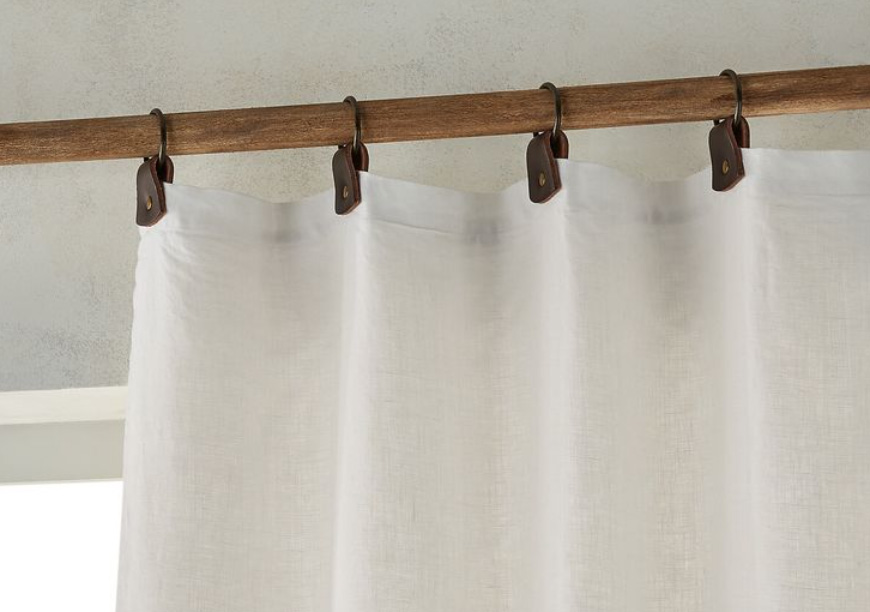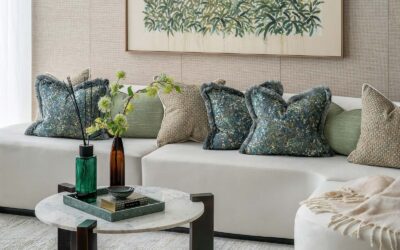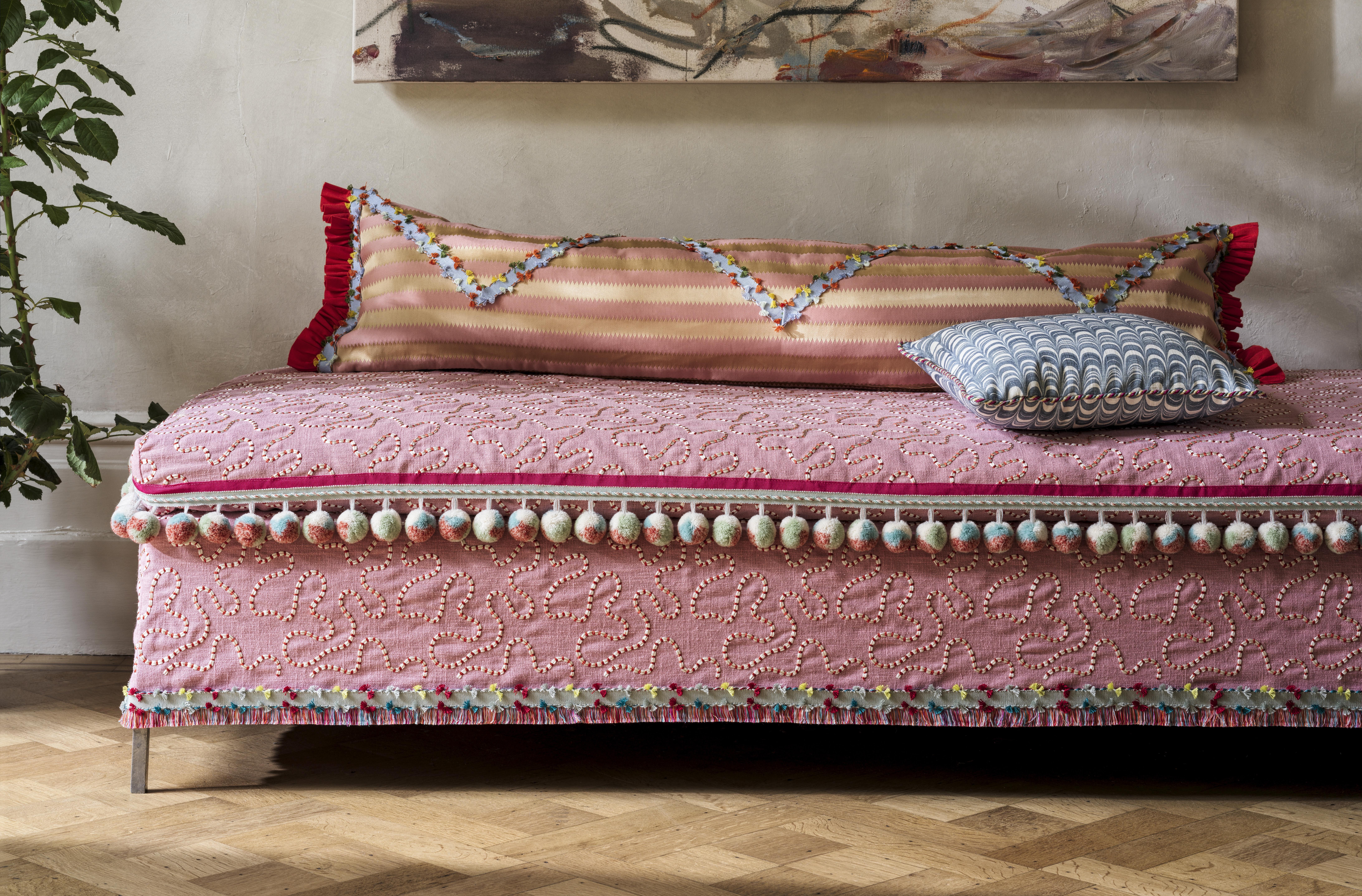Drapery hardware is often the last thing people choose, but in our world, it should be one of the first. The rail, rod, track or pole sets the tone for how the window dressing sits, moves, and even feels. It’s not just about hanging curtains; it’s about finishing the entire look.
From concealed tracks to classic poles with finials, we’re breaking down the options, explaining how each one shapes the finished result, and offering our take on what works best – and when.
Track, Rod or Rail: What’s the Difference?
Let’s start with the basics:
Curtain Track (aka Rail)
Clean, discreet and often hidden, tracks are typically fitted to the ceiling or wall and allow curtains to glide smoothly. Ideal for modern spaces or when you want the fabric to be the star.
Best for: Wave headers, full-height curtains, or where you want a ceiling-to-floor flow with no visual interruption.
We love a ceiling-mounted track paired with sheer linen for a floaty, architectural feel that softens harder edges
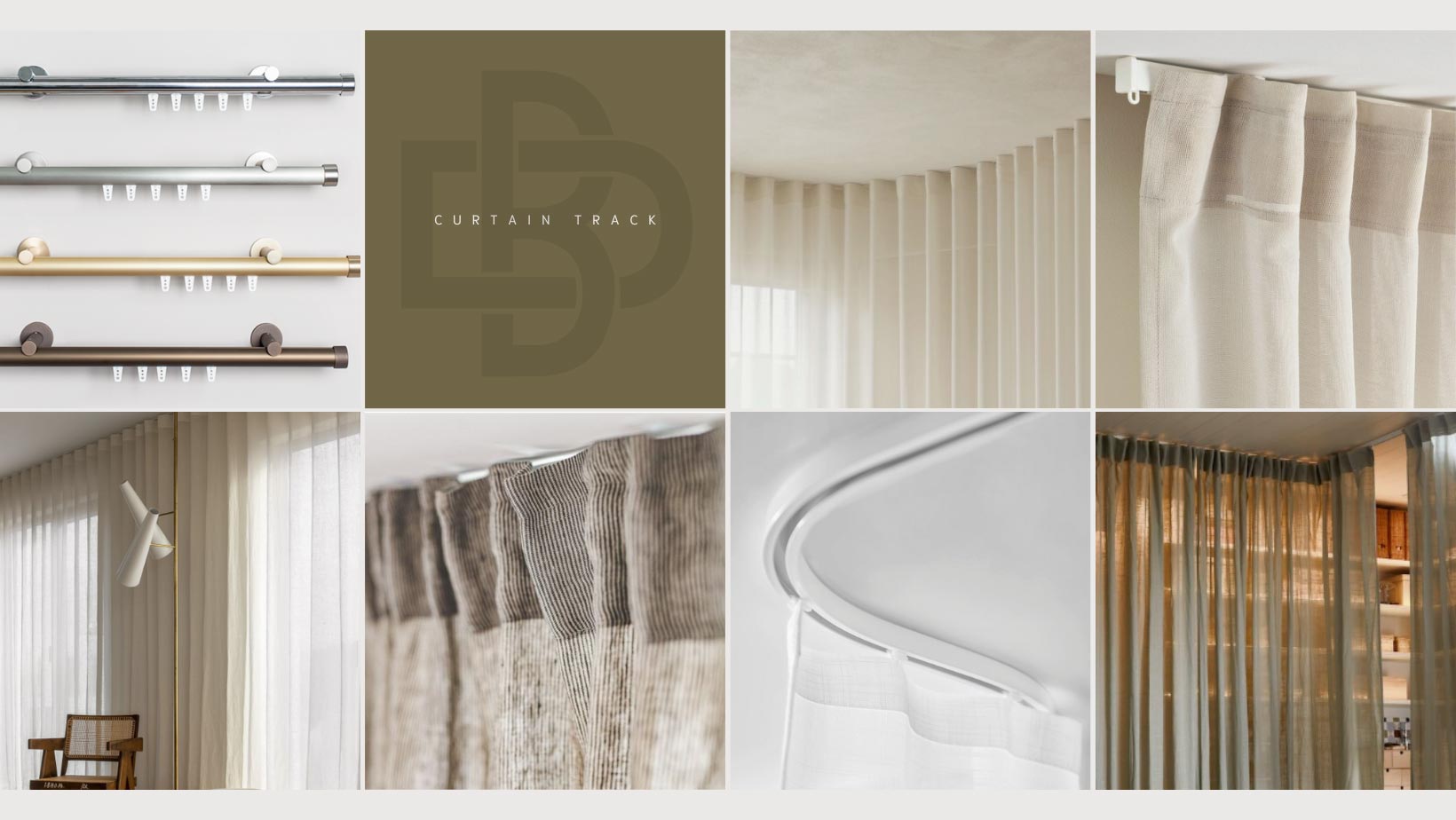
Curtain Rod (aka Pole)
A visible feature, often decorative. Think brushed brass, blackened metal or natural wood. Rods add character and a traditional or tailored feel depending on finish and finial.
Best for: Pleated curtains, statement windows, or adding contrast and shape to a softer scheme.
Right now, blackened metal poles with simple cylindrical finials are really having a moment, they work well in both period and contemporary settings.
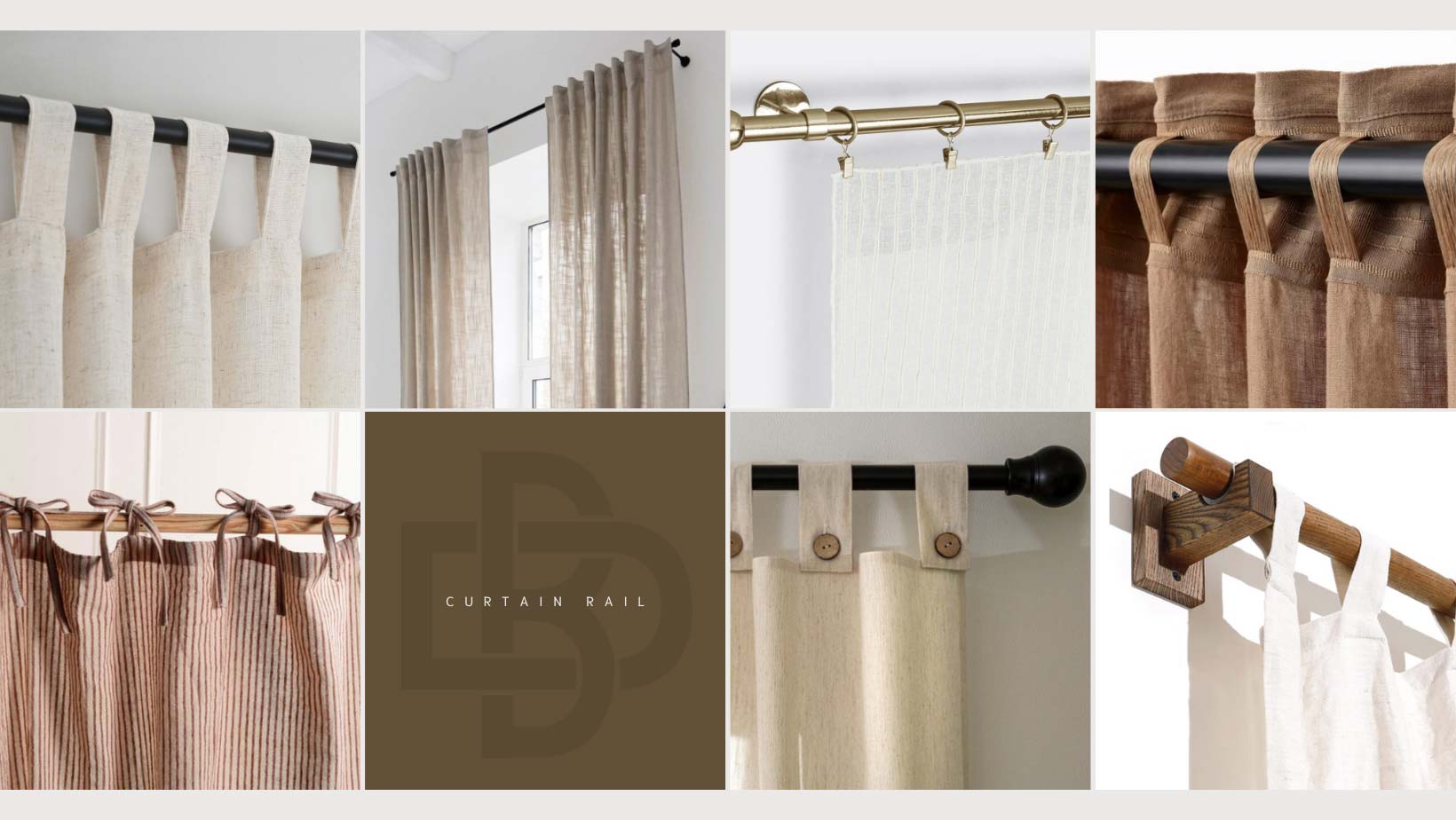
Specialist Systems
Motorised tracks, double-layer systems, flush ceiling channels – these options take things a step further, blending innovation with visual delight.
Best for: Smart homes, layered treatments (like sheers with heavier drapes), or ultra-clean contemporary interiors.
One of our favourites for layered windows is a twin-track recessed system, it’s quietly clever and incredibly polished when done right.
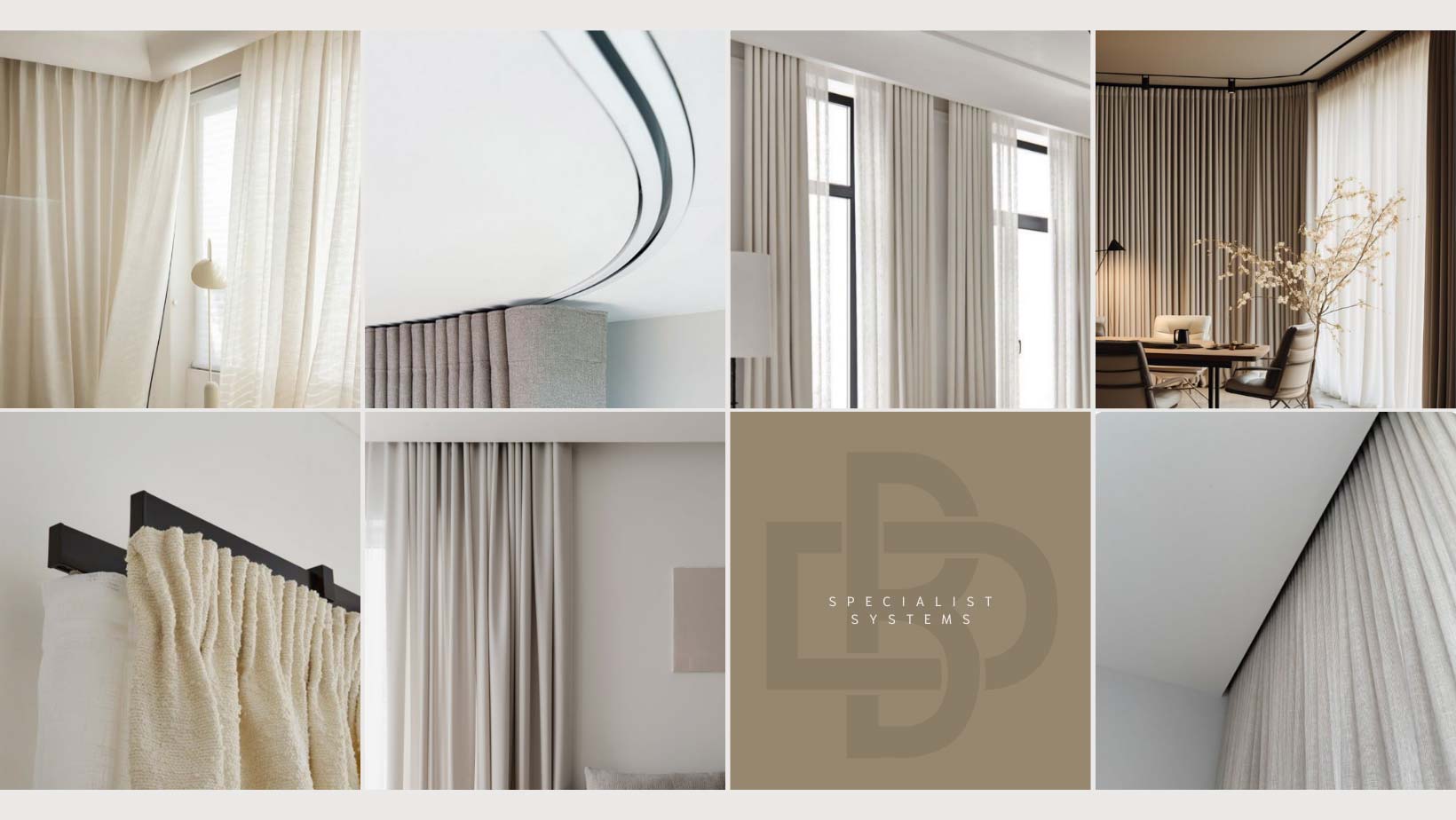
How to Choose the Right Finish
Finish matters. It’s the smallest detail, but it can change the feel of the entire room.
Metallics (brass, bronze, blackened steel): Add weight and a little polish. Use with sheer fabrics or to bring edge to a more traditional setting.
We often use antique brass poles to echo other finishes in the room; it’s a clever way to create cohesion without being overly matchy.
Wooden poles: Soft, natural and perfect for classic or rustic schemes. We love them with hand-sewn pencil pleats or relaxed linens.
Painted timber poles in soft white or deep charcoal are a timeless favourite of ours for neutral interiors with a tailored edge.
Painted finishes: A smart way to blend hardware into the background, especially useful when working with bold wall colours or tonal palettes.
Ceiling tracks: Often powder-coated to match ceiling paint; minimal, seamless, and a go-to in contemporary or architectural spaces.
Finials, Brackets & Beyond
Finials are like punctuation marks – they complete the sentence. Whether it’s a clean cylinder, a carved ball, or something more sculptural, they set the tone.
We’re currently favouring minimal finials, or even none at all, especially when working with simple wave curtains or modern spaces where less really is more.
Brackets matter more than you think. Oversized brackets can feel clunky, while well-chosen, streamlined ones let the fabric do the talking.
Holdbacks and tiebacks have come a long way. From chunky, oversized tassels to minimal leather tabs or discreet metal bars, they can be bold or barely there – but always part of the design.
We find they work best when treated a bit like jewellery — subtle or statement, chosen intentionally to finish the overall look.
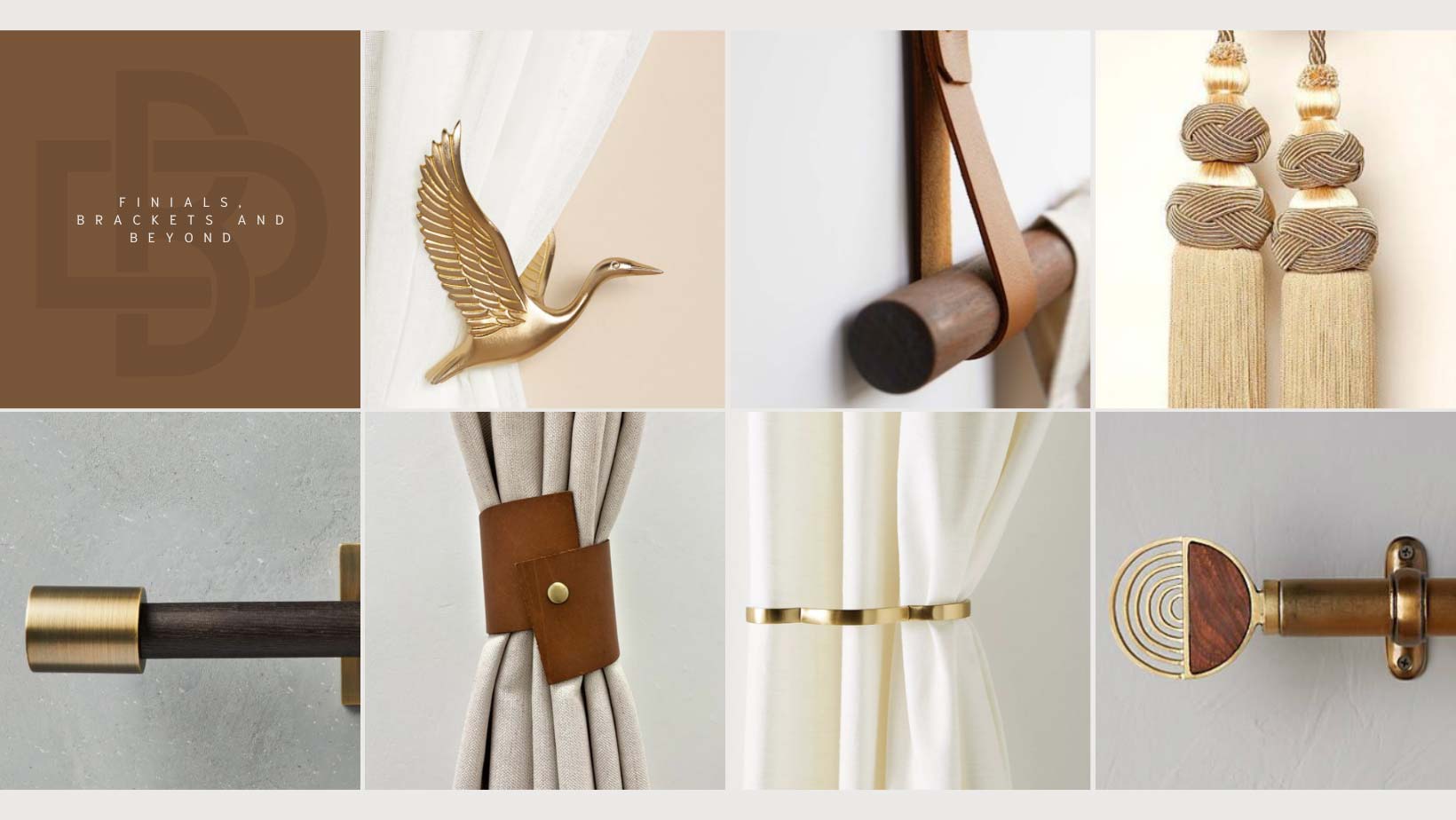
Our Three Golden Rules for Drapery Hardware
Function first, but never at the expense of form.
If it doesn’t glide well or hold the weight of the fabric properly, it doesn’t belong in your space – no matter how pretty it looks.
Let the fabric lead.
The curtain style, heading and fullness should guide your hardware choice. A wave curtain needs a track; a hand-pleated velvet deserves a rod that can hold its own.
Hardware isn’t an afterthought.
It’s an integral part of the design. The best interiors get the details right and that includes what’s holding up your curtains.
Drapery hardware might sit quietly in the background, but it’s never just there for function. Get it right, and it becomes part of the architecture of the room, shaping how the fabric falls, how the space feels, and how the whole window reads.
When it comes to soft furnishings, it’s never just about the fabric. It’s how it’s finished and what it’s hanging from that makes all the difference.
Choosing the right hardware isn’t just practical, it shapes the whole look. If you’re looking to get it right from the start, we’re here to help. Contact us here to speak to our team.




